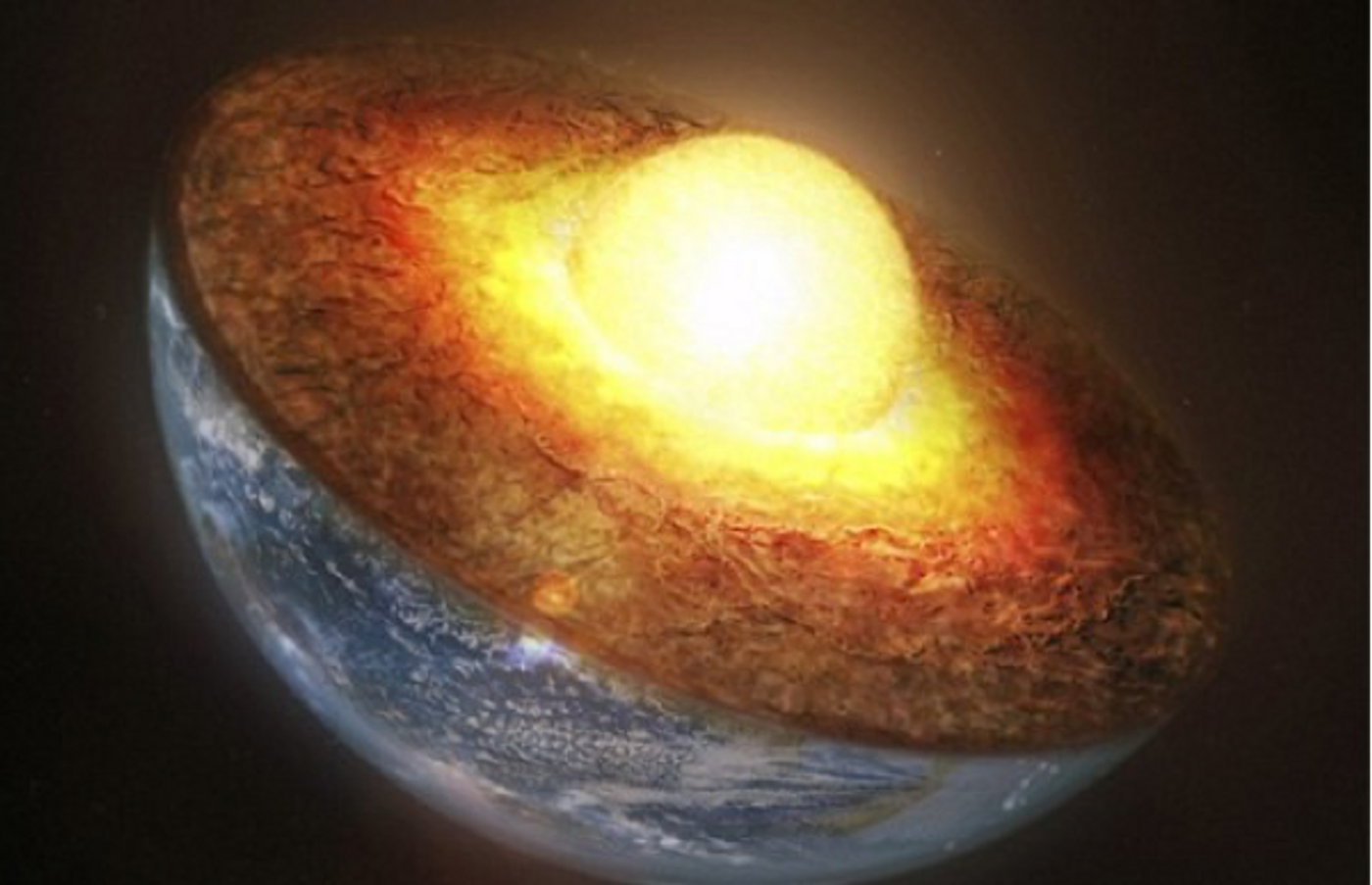How Old is the Earth's Core?
The Earth may look like a cool, pretty green and blue ball with white cloudy swirls atop it all from the view of outer space, but on the inside, about 6,300 kilometers deep, it’s a hellish ball of molten liquid iron that feeds tectonic activity and volcanoes all around the world.
The Earth’s core has been difficult for scientists to investigate, mostly because it’s never been examined up close. It’s deep inside the planet’s crust, several times deeper than mankind has ever dug or drilled down into the Earth before. Because of this, scientists have never really been able to accurately put an age on the Earth’s molten iron core.

The core of the planet is comprised of an inner core and an outer core. The inner core is static and never moves, but the outer core is dynamic and is always moving. Being that metal is moving on metal, a magnetic field is generated deep inside of our planet, and this is the magnetic field that we understand today to protect us from harmful space radiation; it’s also the same magnetic field that powers our compasses by generating a north and south pole.
By studying the magnetic fields, scientists believe that they can accurately put an age on the core of the planet, which has now been estimated to be anywhere between 1 to 1.5 billion years old.
The lead of the study, and palaeomagnetism expert, Dr Andy Biggin of the University of Liverpool, compares the Earth’s core to Mars’ core. The study’s findings have been published in Nature.
The theoretical model which best fits our data indicates that the core is losing heat more slowly than at any point in the last 4.5 billion years and that this flow of energy should keep the Earth's magnetic field going for another billion years or more. This contrasts sharply with Mars which had a strong magnetic field early in its history which then appears to have died after half a billion years.
Earth continues to generate this magnetic field thanks to the continuation of flowing metals surrounding the solid core. Earth’s core still flows strong, encouraging scientists to believe that the Earth will continue to provide its life the protection it needs from solar radiation for at least another billion years (or more) to come.
Mars, one of our similar neighboring planets, on the other hand, has a very weak magnetic field because its core is no longer flowing enough produce enough energy to create a powerful magnetic field. This is one of the reasons why people wouldn’t be able to easily live on Mars.
Source: University of Liverpool








